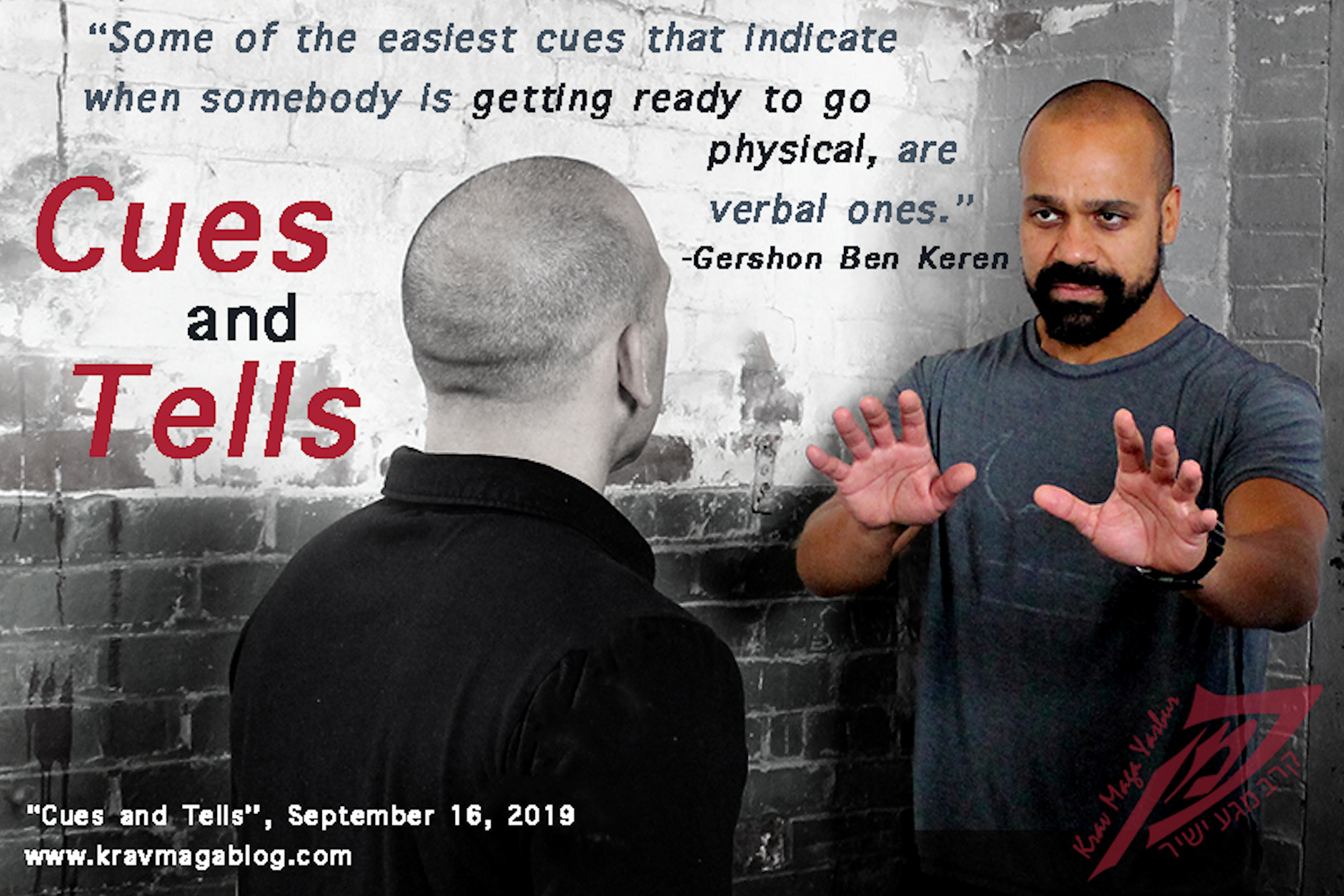Author: Gershon Ben Keren

Most violence happens face-to-face and is preceded by some form of verbal exchange – this is true of both social (spontaneous) and asocial (premeditated) violence. Few attacks are initiated from the rear, which means in most cases we will have a chance to stop the attack before we feel/fully experience it. This doesn’t necessarily mean we won’t be surprised by it, even if we’re expecting it, but it does mean that we have a chance to see it take shape before it happens. Few people are experienced in disguising their movements as they try to set up a punch, and most will telegraph their intent some time before they make their physical assault; often using the conversation/dialogue as a cover whilst they do this. Like a slight of hand magician, they distract you by getting you to concentrate on the verbal dispute, rather than allow you the time to focus on their physical actions and movement as they prepare to set up their strike, etc. If you are ever involved in a conversation which makes you feel uneasy, or find yourself in some form of aggressive verbal confrontation, there are certain things that you should be looking out for, that indicate the person you are dealing with is about to get physical.
Some of the easiest cues that indicate when somebody is getting ready to go physical, are verbal ones. As well as looking for physical “tells” when I have to deal with aggressive individuals, I am also listening to what they say, and more importantly, how they say it. Human beings can’t multi-task, and so when somebody is weighing up whether to hit/punch you or not, certain processes start to shut down or get interrupted, and one of these is speech. One hint that somebody has given up on searching for a non-violent/physical alternative, is when their speech patterns become more staccato, and there are longer pauses in the conversation; these gaps are usually where the individual is deciding whether they should launch an attack – throwing the first punch involves making a decision, and like all decisions takes some degree of time and effort. With certain people – and this makes it more obvious that they are getting ready to make a physical assault – their speech will speed up, and become more emotional, perhaps resulting in “repetitive looping” where they keep repeating, over and over again, whatever injustice they believe has befallen them, as they attempt to get themselves emotionally prepared to “start” the fight.
An obvious cue that many people fail to pick up on, is when a potentially violent individual shifts weight on to their rear foot. Children are often better at understanding survival situations than adults, because they don’t get caught overthinking things. Whilst many adults stood around on the beaches of Thailand in 2004 watching and marveling at the way the sea was rapidly receding away from the shore, one small girl, grabbed her parents and started to run, pulling them away. In a moment she had realized that all that water had to come back, and it was probably going to do so in a devastating way. If somebody shifts their weight onto their back foot, during a verbal altercation, it is probably because they are looking to shift their weight forward again, to give power to their punch/strike. When I used to work the door, after some form of verbal enforcement had to be made, the person I was dealing with would sometimes step back, and turn, as if they were walking away, using this movement to try to disguise the fact that they were actually setting up a large/powerful punch. I soon learnt to step back and to the opposite side of where they stepped in order to give myself the most time to react/respond if this is what they were preparing to do.
Turning the head/face away was also a common action that people would engage in when they were getting ready to throw a punch. This motion often gets confused with “scanning” — where a person looks around them to check for witnesses, CCTV cameras, the presence of security personnel, and to make sure that their planned escape routes are still clear, etc. Whilst people do engage in scanning, I’ve normally seen it conducted by an individual who is planning an assault, as they set up the situation, such as when they have selected a target and are still in the surveillance phase, as opposed to during the actual confrontation itself – at this point they are usually too committed to the confrontation, and are no longer checking their environment but rather engaging with the target/victim they have selected. I’m not saying that people don’t do some or all of these things during a verbal altercation which they use as part of the setup for an attack, but rather that in my personal experience I’ve generally seen it done beforehand. Turning away, during a verbal exchange, almost seems to be a moment of contemplation where the individual takes a moment to decide whether they should launch an attack, and if they should throw the punch in this particular moment. Again, from experience, it’s the type of thing which is usually done a few times, before an aggressor is ready to make their strike; it’s almost if there are several moments of indecision before they finally decide that this is what they have to do.
Even when we are expecting somebody to throw a punch during a verbal altercation, we are still likely to be surprised by the initial movement – and we will be reacting to it; unless we have decided to make our own pre-emptive assault. The more prepared we are, the less surprised we will be, and recognizing at the earliest opportunity some of the things an assailant may do as they get ready to make their attack, will help us in this.